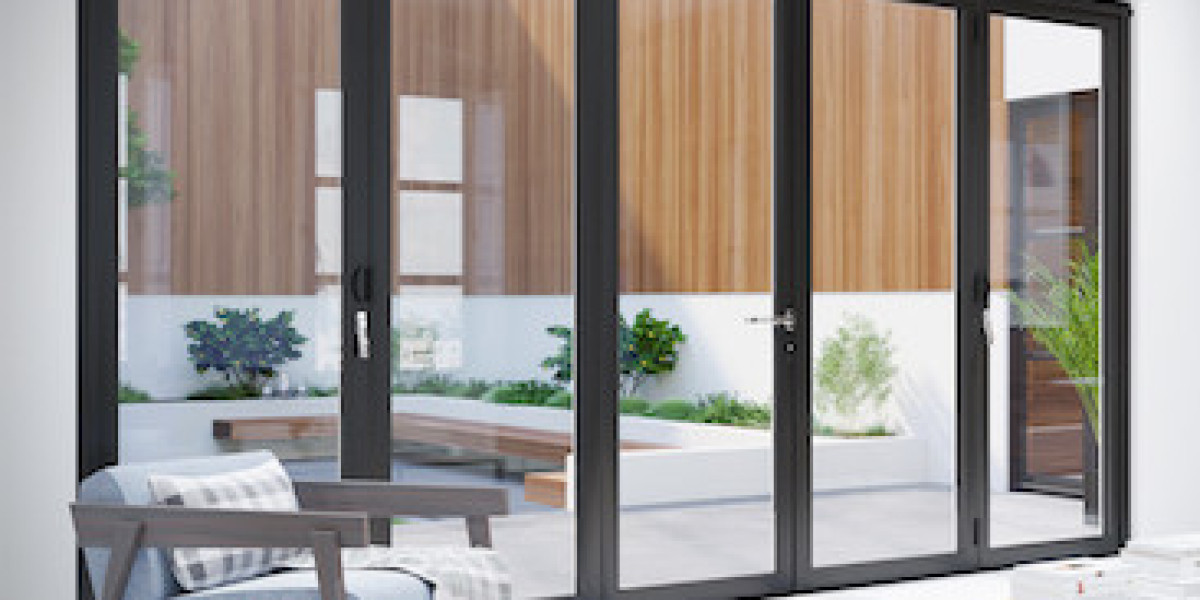Restoring Smooth Operation: A Comprehensive Guide to Repairing Your Bifold Door Top Pivot
Bifold doors, likewise known as folding doors, are a popular option for optimizing area and creating a seamless transition between spaces or in between indoor and outside living areas. Their unique folding mechanism permits broader openings than traditional hinged doors, making them perfect for closets, pantries, utility room, and even as patio doors. However, the smooth and effective operation of a bifold door hinges on numerous crucial components, and one of the most vital, yet frequently neglected, is the leading pivot.
The top pivot is a small but essential mechanism that sits on top corner of a bifold door panel, allowing it to rotate efficiently within the track system. Gradually, due to use and tear, inappropriate positioning, or even accidental damage, this pivot can fail. A malfunctioning top pivot can cause a host of discouraging concerns, from sticking doors and noisy operation to complete immobility. Luckily, repairing or changing a bifold door leading pivot is typically a manageable DIY task, saving you the expense of professional repairs and bring back the performance of your door.
This thorough guide will stroll you through the procedure of understanding, detecting, and fixing bifold doors a bifold door leading pivot. We will check out the components involved, identify common issues, equip you with the required tools and materials, and provide a detailed repair procedure. Whether you are a skilled DIY enthusiast or a house owner tackling home repairs for the very first time, this post will empower you to with confidence deal with a malfunctioning bifold door leading pivot and get your door running smoothly once again.
Understanding the Top Pivot System
Before diving into the repair procedure, it's beneficial to understand the function of the top pivot within the more comprehensive bifold door system. The leading pivot, in conjunction with the bottom pivot (frequently referred to as a guide or wheel), works to manage the motion and stability of each door panel.
Typically, a bifold door system includes:
- Top Track: A metal track installed horizontally at the top of the door opening. This track houses the top pivots and guides the door panel's motion.
- Bottom Track or Guide: Some bifold door refurbishment specialists door systems use a bottom track, while others utilize a bottom guide that is either a pin or a wheel, interacting with a groove or channel on the floor or door jamb. This bottom element assists support the door panel and maintains positioning.
- Top Pivots: These are small, typically plastic or metal components that are placed into the leading edge of the door panel and ride within the top track. They allow the door panel to pivot and slide smoothly along the track.
- Connecting Hinges: Hinges that connect the specific door panels together, permitting them to fold in a concertina style.
- Door Handles and Hardware: Hardware used for operating and securing the bifold door.
The leading pivot bears a substantial load, facilitating the smooth sliding and folding action of the door. It requires to be robust enough to hold up against continuous usage, yet precise adequate to enable for simple and easy motion. Understanding its function helps in valuing why its proper function is so critical to the general operation of the bifold door.
Identifying Common Top Pivot Problems
Recognizing the signs of a stopping working top pivot is the initial step towards an effective repair. Here are some common signs that indicate a problem with your bifold door's leading pivot:
- Sticking or Jerky Door Movement: The door ends up being difficult to open or close efficiently, thinking twice or catching as it moves along the track. This is typically the most obvious symptom.
- Noisy Operation: You might hear grinding, squeaking, or clicking sounds as the door is run, showing friction or damage within the pivot mechanism or track.
- Door Panel Drooping or Sagging: If the top pivot is used or broken, the door panel might droop slightly at the top, causing misalignment and more preventing smooth operation.
- Visible Damage to the Pivot: Upon assessment, you may be able to see fractures, chips, or breaks in the plastic or metal components of the top pivot itself.
- Door Jumping Out of the Track: In extreme cases of pivot failure, the door panel may leap out of the leading track completely, ending up being completely inoperable and possibly harming the door or frame.
- Increased Effort to Operate: If you discover yourself having to put in more force than normal to open or close the door, it could be an indication of increased friction due to a stopping working pivot.
If you observe any of these symptoms, it is extremely likely that your bifold door's leading pivot needs attention. Disregarding these concerns can result in additional damage to the door, track, or surrounding frame, making the repair more complicated and costly in the long run.
Tools and Materials You'll Need
Before you begin the repair, collect the needed tools and materials to make sure a smooth and effective procedure. Having everything prepared beforehand will conserve you time and aggravation.
Tools:
- Screwdriver Set: A Phillips head and flathead screwdriver will be essential for getting rid of and setting up screws connected with the pivot and door hardware. Guarantee you have various sizes to fit various screws.
- Pliers: Pliers can be practical for grasping and maneuvering small parts, especially if the old pivot is stuck or difficult to get rid of.
- Hammer (Optional): A lightweight hammer might be required to gently tap the brand-new pivot into place, if needed by the design.
- Determining Tape: To make sure precise placement and positioning when installing the new pivot.
- Pencil or Marker: For marking positions and making sure appropriate positioning.
- Shatterproof glass: Protecting your eyes is essential when dealing with tools and hardware.
- Gloves (Optional): To secure your hands and provide better grip.
Products:
- Replacement Top Pivot: This is the most important product. It's vital to purchase a replacement pivot that works with your particular bifold door system. Take the old pivot with you to the hardware shop for comparison, or take down the door manufacturer and design if possible. Leading pivots been available in numerous sizes and designs.
- Lubricant (Silicone Spray or Dry Graphite): Lubricating the track and new pivot will make sure smooth, quiet operation and extend the life of the pivot.
- Wood Filler or Wood Glue (Optional): If the screw holes holding the pivot in place are stripped or harmed, wood filler or glue may be needed to reinforce them.
- New Screws (Optional): If the existing screws are harmed or removed, have a set of replacement screws of the proper size and type on hand.
Step-by-Step Guide to Repairing the Top Pivot
With your tools and products all set, you can now continue with the repair. Follow these detailed guidelines thoroughly:
Step 1: Safety and Preparation
- Put on your shatterproof glass.
- Ensure the work location is clear and well-lit.
- Collect all your tools and products and place them within easy reach.
Action 2: Inspect and Access the Top Pivot
- Carefully take a look at the top pivot of the troublesome door panel to visually assess the damage. Search for fractures, breaks, or indications of wear.
- Identify how the pivot is connected to the door. Many are normally held in place by screws.
- You might require to slightly open or close the bifold door fix door to gain better access to the top pivot.
Action 3: Remove the Old Top Pivot
- Utilizing the suitable screwdriver (generally Phillips head), carefully eliminate the screws protecting the top pivot to the door panel.
- If the screws are stripped or tough to get rid of, you may require to use pliers to grip the screw head and gently turn it. Avoid harming the surrounding door product.
- As soon as the screws are removed, gently take out the old leading pivot. If it's stuck, use pliers to gently wiggle and pull it complimentary.
Step 4: Prepare for the New Pivot (If Necessary)
- Inspect Screw Holes: Examine the screw holes in the door where the pivot was connected. If they are removed or bigger, you might need to strengthen them.
- For Minor Stripping: Apply a little amount of wood glue into the screw hole and let it partly dry for a few minutes. This will give the screws a much better grip.
- For Severely Stripped Holes: Use wood filler to fill the removed holes totally. Allow the filler to dry and harden according to the product directions. When dry, pre-drill pilot holes a little smaller sized than the new screws to ensure a secure attachment.
Step 5: Install the New Top Pivot
- Position the new top pivot in the exact same orientation as the old one was gotten rid of.
- Align the screw holes of the brand-new pivot with the holes in the door panel.
- Place the screws and tighten them safely with the screwdriver. Prevent overtightening, which might strip the screw holes or damage the pivot. Ensure the pivot is firmly attached however not excessively tight.
Action 6: Lubricate the Track and Pivot
- Apply a percentage of silicone spray or dry graphite lube to the top track of the bifold door, focusing on the location where the top pivot will run.
- Likewise, gently oil the moving parts of the brand-new leading pivot itself. This will promote smooth operation and reduce friction.
Step 7: Test and Adjust
- Thoroughly operate the bifold door, opening and closing it a number of times.
- Examine for smooth, peaceful motion. If the door still sticks or binds, re-inspect the pivot for proper installation and alignment.
- Guarantee the door panels fold and unfold correctly and that the door is not rubbing against the frame or track.
- If needed, small adjustments to the pivot position or track alignment may be required. Consult your bifold door maker's directions for particular change procedures if provided.
Step 8: Clean Up
- As soon as you are pleased with the door's operation, tidy up your work area and put away your tools.
Fixing Common Issues
While fixing a leading pivot is frequently simple, you might experience some difficulties. Here are a couple of fixing ideas:
- Pivot Doesn't Fit: If the brand-new pivot does not fit into the track or door, double-check that you have the proper replacement type. Compare it closely to the old pivot and the door requirements.
- Screws Won't Tighten: Stripped screw holes are a typical problem. Refer back to Step 4 and use wood filler or glue to reinforce the holes before attempting to tighten the screws once again.
- Door Still Sticks After Pivot Replacement: If the door still doesn't run efficiently after replacing the pivot, the problem might lie in other places. Examine the bottom pivot/guide, the track for debris or damage, or the door panel hinges for stiffness.
- Door Panel Misalignment: If the door panels are not aligned properly after repair, ensure the leading pivot is effectively seated in the track which the door panel is properly placed within the frame. Examine for any warping or damage to the door panel itself.
Keeping Your Bifold Door Pivots
Preventative maintenance can significantly prolong the life-span of your bifold door pivots and minimize the requirement for regular repairs. Here are some helpful maintenance pointers:
- Regular Lubrication: Lubricate the leading track and rotates with silicone spray or dry graphite every couple of months to minimize friction and wear.
- Keep Tracks Clean: Periodically clean the top and bottom tracks to eliminate dust, dirt, and debris that can restrain smooth operation. Use a vacuum or a brush to clean up the tracks.
- Inspect Regularly: Inspect the top and bottom pivots routinely for indications of wear, damage, or looseness. Deal with any minor problems quickly before they escalate.
- Prevent Slamming: Avoid slamming the bifold doors, as this can put unneeded tension on the pivots and hardware, leading to premature failure.
- Inspect Alignment: Periodically inspect the positioning of the door panels to ensure they are folding and unfolding correctly which there is no excessive stress on the pivots.
When to Call a Professional
While DIY repair is frequently possible, there are scenarios where looking for professional help is a good idea. Think about calling a door repair professional if:
- You are uneasy with DIY repairs.
- The damage to the door or frame is extensive beyond simply the pivot.
- You are unable to determine the correct replacement pivot.
- You come across persistent problems after attempting the repair.
- The bifold door is part of a complex system, such as a multi-panel patio door, and requires specialized understanding.
A professional door service technician has the experience and knowledge to properly identify intricate bifold door issues and perform repairs efficiently and effectively.
Repairing a bifold door leading pivot is a fulfilling DIY task that can bring back the smooth and simple and easy operation of your door. By understanding the components, identifying the issue, and following the detailed guide detailed in this article, you can confidently tackle this repair and save yourself money and time. Routine upkeep and prompt attention to small concerns will make sure the durability and trustworthy efficiency of your bifold doors for many years to come, adding to the comfort and functionality of your living area.
Often Asked Questions (FAQs) about Bifold Door Top Pivot Repair
Q1: How do I know what kind of leading pivot to buy as a replacement?
A: The best method is to remove the old pivot and take it with you to a hardware store. Compare it aesthetically to the offered options, paying attention to the size, shape, and accessory approach. Alternatively, if you know the producer and model of your bifold door, you may be able to discover particular replacement parts online or through the producer.

Q2: Can I repair a damaged leading pivot, or do I always need to replace it?
A: In many cases, it's more practical and dependable to replace a damaged or used top pivot instead of trying to repair it. Pivots are reasonably low-cost, and replacement makes sure appropriate function and durability. Trying to repair a broken pivot may lead to more issues and is generally not advised.
Q3: My screws are removed and won't hold the new pivot. What can I do?
A: Stripped screw holes prevail. Try utilizing a little longer or thicker screws. If that doesn't work, apply wood glue into the screw hole and let it partially dry before re-screwing. For badly stripped holes, utilize wood filler to fill them completely, let it dry, and after that pre-drill pilot holes for the brand-new screws.
Q4: Do I need to remove the entire bifold door to replace the leading pivot?
A: Often, you can replace the top pivot without completely getting rid of the door panel. However, depending on the style and availability, it might be much easier to partially separate the door panel to gain much better access. In some cases, specifically with heavier doors or intricate systems, eliminating the door panel might be much safer and more convenient.
Q5: After changing the leading pivot, my door is still tough to open. What else could be wrong?
A: If the problem persists after pivot replacement, check other potential concerns:
- Bottom pivot/guide: Inspect for damage or debris.
- Track: Clean and lubricate the leading and bottom tracks. Look for damage or blockages.
- Hinges: Ensure the door panel hinges are not stiff or binding. Lube them if essential.
- Door Alignment: Check if the door panels are properly aligned within the frame.
Q6: How often should I lubricate my bifold door tune-up door rotates?
A: Regular lubrication every 3-6 months is suggested for optimal performance. More frequent lubrication may be needed in dirty or high-use environments. Use silicone spray or dry graphite lubricant to keep the pivots and track moving efficiently.




